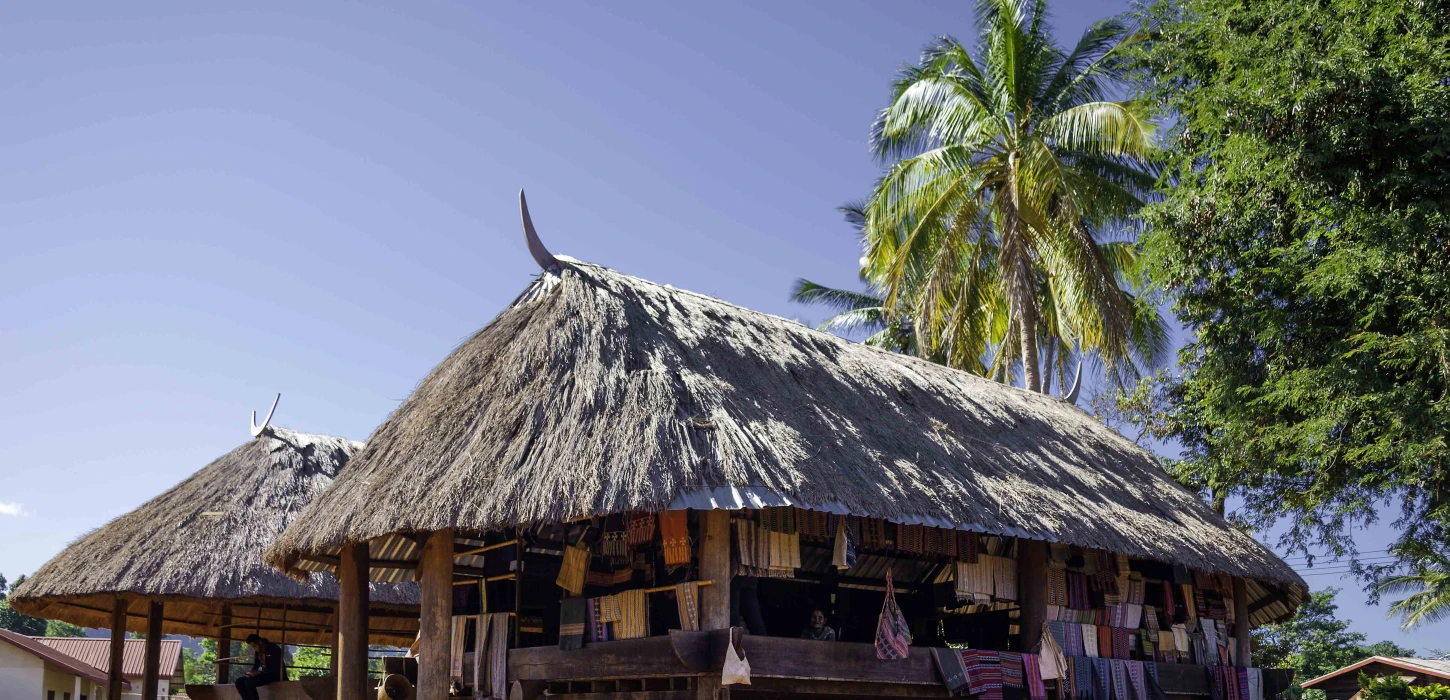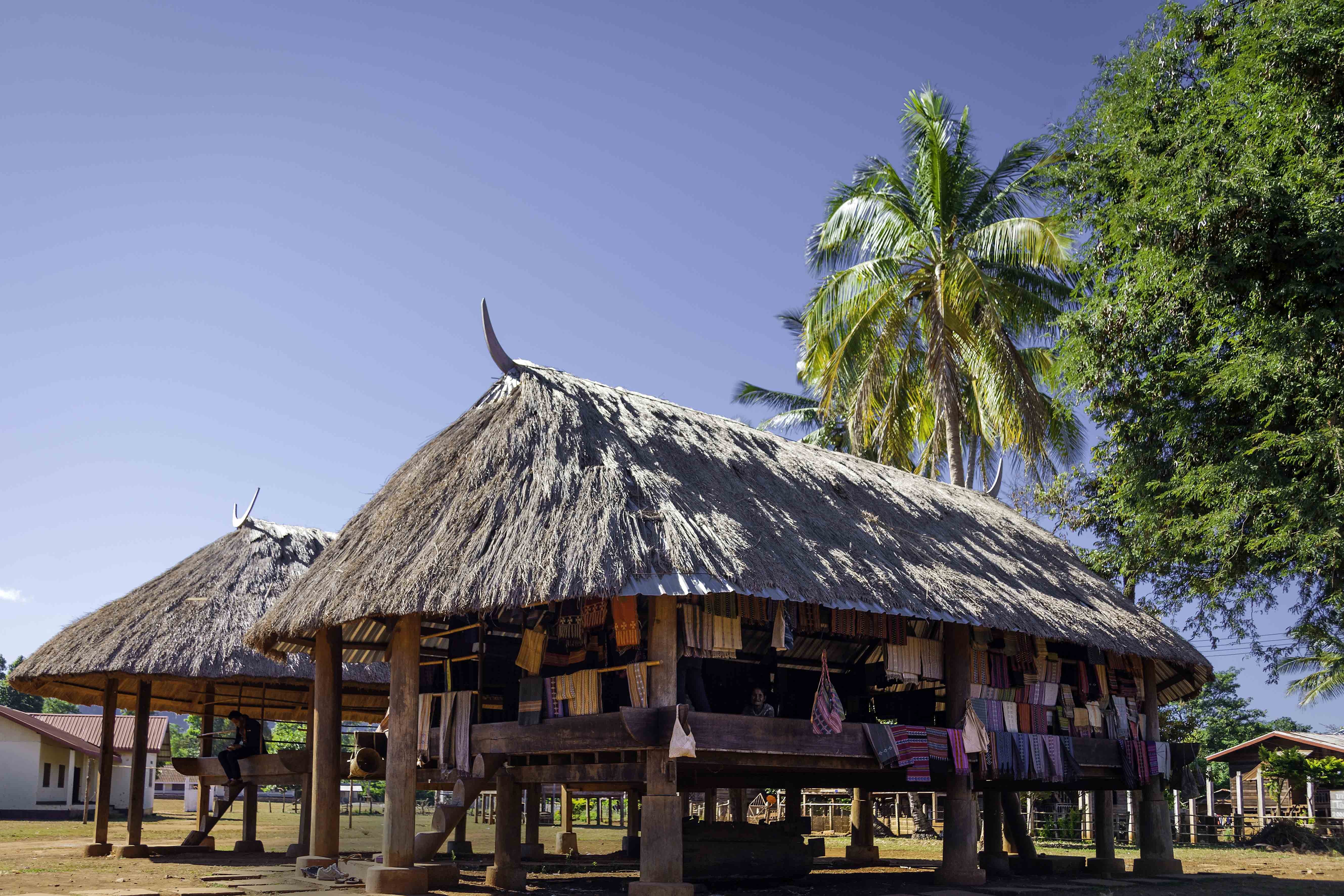
One of Laos's favorite features is its cultural diversity. In Salavan province alone, there are 12 distinct ethnic groups, most of which are mainly of the Austroasiatic (Mon-Khmer) language family. The largest subgroup in the region is the Katou ethnic group, which is mainly scattered along the Bolaven Plateau (Paksong, Salavan, Sekong) and Attapeu.
To learn more about the Katou tribe, we traveled from Pakse to Ban Khan Don – a multi-ethnic village located between Sekong and Salavan provinces. The village was named after the Khan Don river, to pay homage to their source of livelihood. Ban Khan Don is home to several ethnic groups in addition to Katou, such as the Alak and Nge people. When we arrived at the community house, a rectangular wooden hut usually located in the center of the village, we were amazed at the artifacts displayed inside. These works tell the story of the traditional way of life of the Katou people from when they lived in the highlands until deciding to settle in their present location in 1961. The artifacts are mainly wooden or bone and very interesting to see. We recommend booking a village guide to learn more about the meanings and stories behind the artifacts in English.
Every year since 1996, the village holds the Katou festival on March 5; and every 10 years there is a larger celebration attended by tribal members from other provinces. During the festival you can expect a lot of dancing, especially around the community house and loads of food. On the first day, the villagers dance around the main hut three times - as the community believes three and odd numbers are generally lucky - to pay respects to their ancestors. Local people also wear costumes to sacrifice a buffalo on this day.
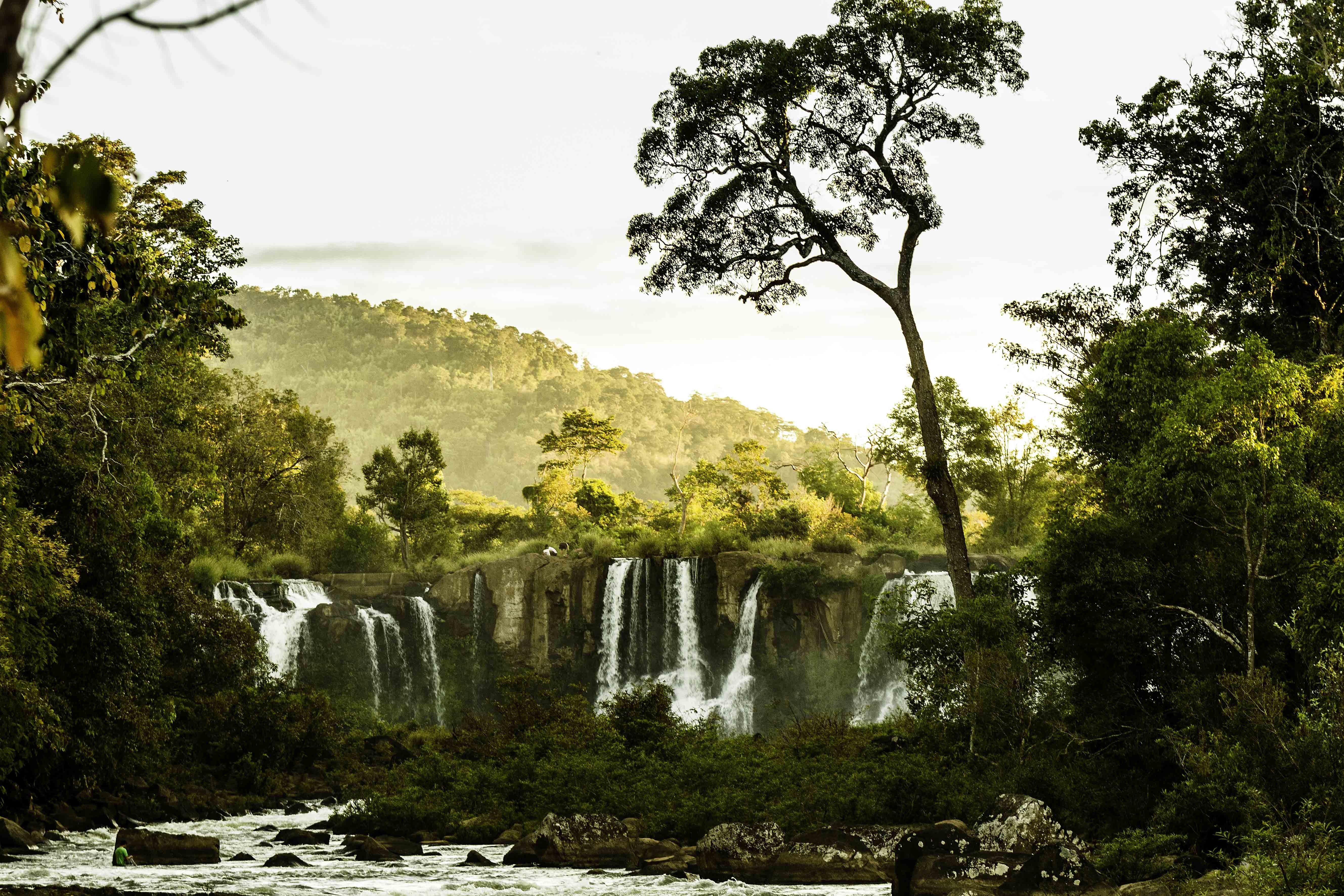
We walked around Ban Khan Don to learn more about their weaving and coffin making, an unusual sight in Laos, where it is customary to cremate rather than bury the deceased. Families carve wooden coffins for each family member before they die, and the complexity of the coffin design depends on each person's rank in the village (or how deep each person's pocket is. any). Near the community house, visitors can also see members of the Talieng ethnic group hand-weaving fabrics on looms, an important part of their tradition as well as a source of income. Stripes, geometric stripes and decorative patterns indicate both cultural beliefs and important historical events of the tribe.
The provinces of Sekong, Salavan and Attapeu are famous for their numerous waterfalls, UXO remnant collections, cassava growing and Katou textile industries. There are some famous shops and some lesser known shops in this area where you can buy these textile items: Mr Vieng shop in Salavan, Mr Khamlay shop in Sekong and around Morning market in Attapeu. Although there are obvious differences in design and materials used, we especially like Mr. Khamlay's natural dyed fabrics not only for traditional Lao living but also for decoration around the house. such as tablecloths, rugs and placemats. While in Sekong, try to visit the lesser known but equally beautiful Tad Faek located in Lamam District, which is named after the fairy grass that abounds in the former area.
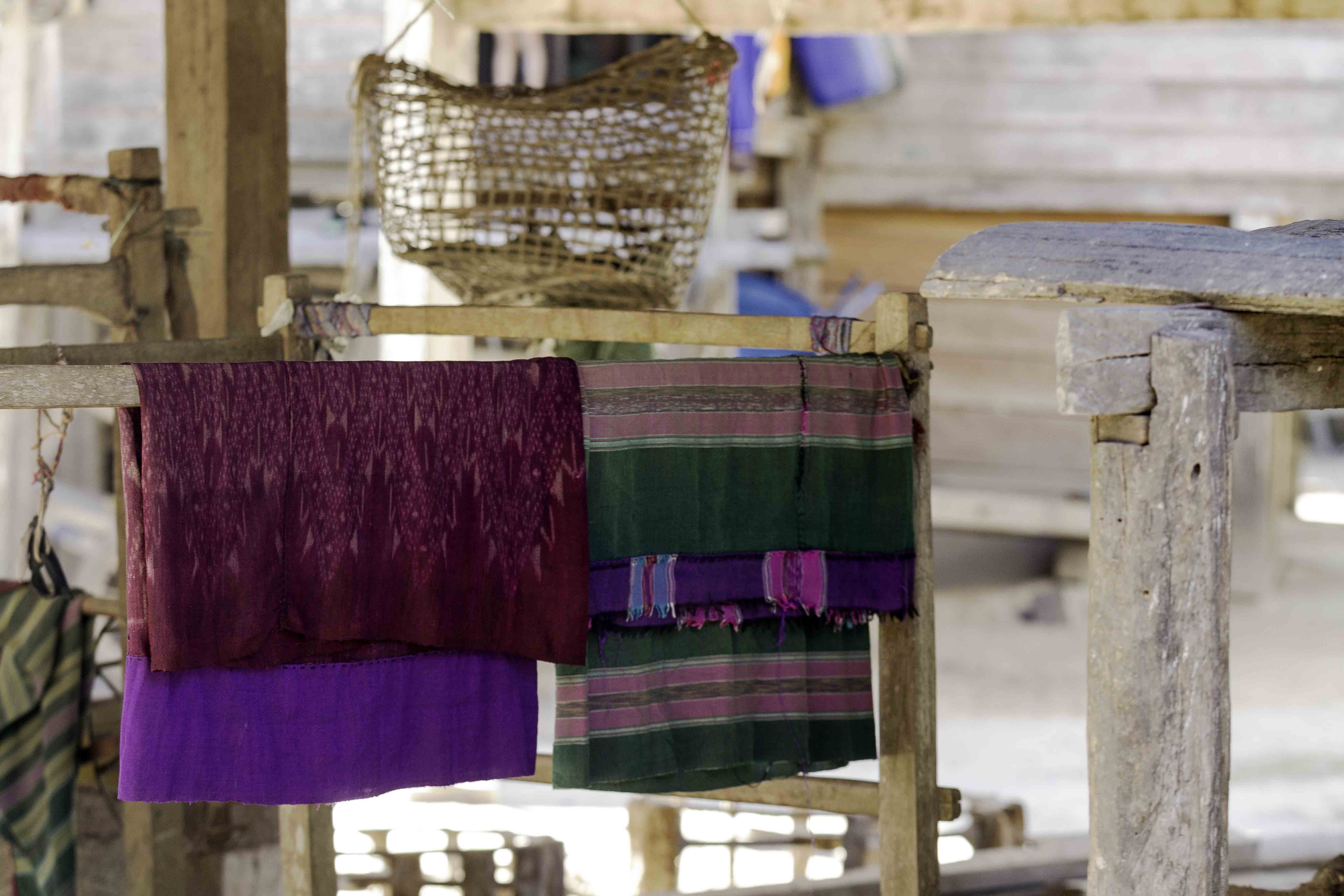
We traveled a bit further to the neighboring province of Salavan, which only became an independent province in 1984 when it separated from Sekong, to visit the colorful Wat Kang. Filled with magnificent paintings depicting ancient stories, this pagoda is situated inside a temple complex in the heart of the city center. If you are in the mood for even more textiles, drop by Toumlan District to experience a Katang weaving village, another ethnic group in Southern Laos. Of course, a trip to Salavan is not complete without a visit to popular Tad Lo and Tad Hang waterfalls.
Discover Attapeu’s border with Vietnam and experience the Ho Chi Minh trail on a dirt bike or their scrumptious local cuisine, particularly the minced pork and herbs steamed inside papaya leaves known generically as “Mouk Moo.” Attapeu is also known for Ginseng, a plant root that has been used in traditional Chinese medicine for centuries.
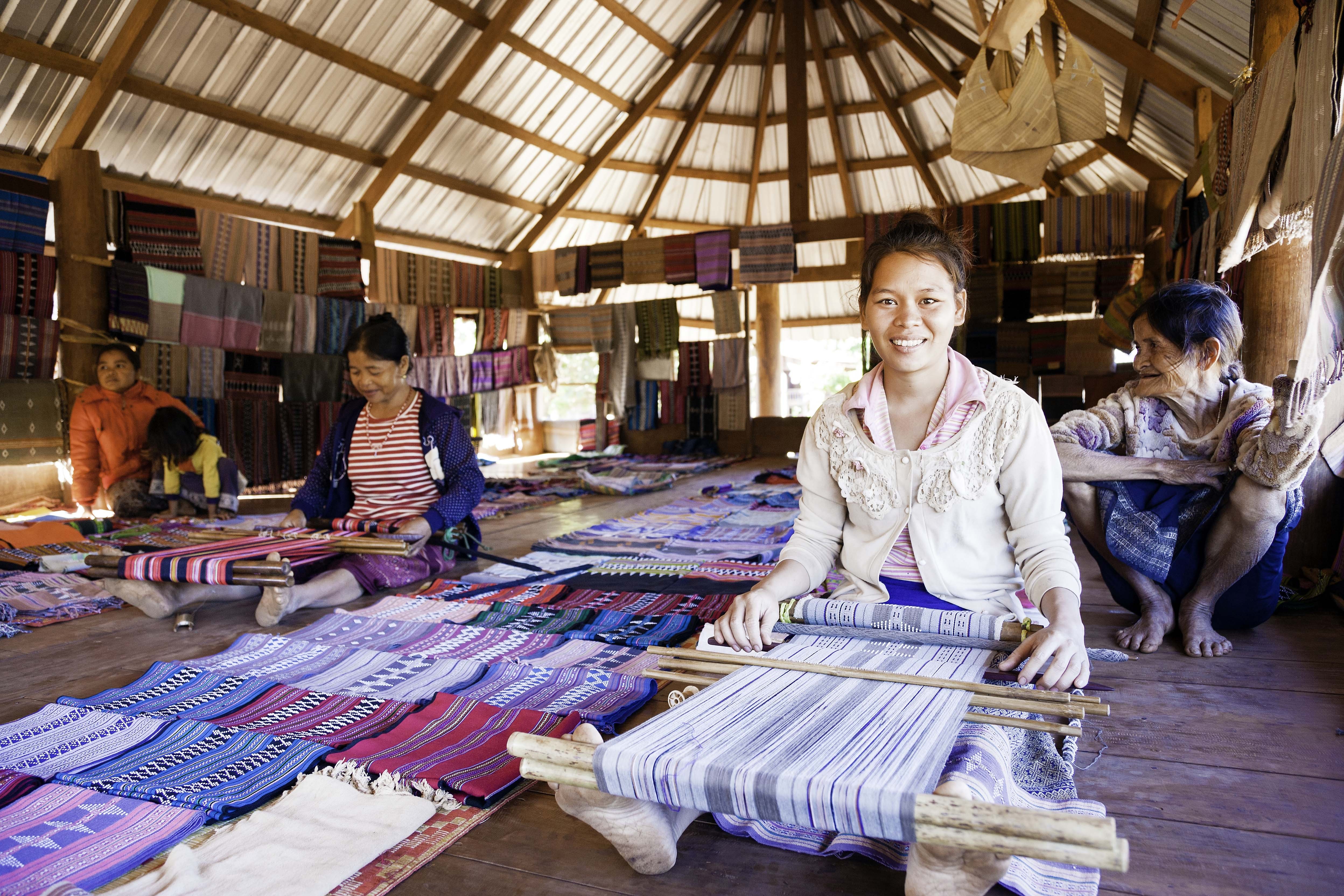
In Attapeu, you can witness the creation of unique and diverse artifacts by several ethnic tribes, such as the ancient art of pottery and jewelry making by the Talieng people or the carpentry of the Lavae people. Additionally, learn more about the matrilineal traditions of the Alak people as well as the animist and shamanic rituals of the Ta Oy people while you're here.
After a few days of learning about the peoples of Southern Laos, it was discouraging to realize that modernity is gradually changing traditions that have remained unchanged for decades, even hundreds of years. As visitors, we feel fortunate to have gained these insights, while we still can, into the different cultures and customs of the region.
ARRIVE THERE
Laos Airlines has daily flights to Pakse from Siem Reap, Vientiane and Luang Prabang, as well as regular flights from Bangkok.
MORE INFORMATION
Se Kong Ban Khan Don Tourism Office: 038211361
Salavan tourism office: 034211528
Attapeu Tourism Office: 02097910333 & 02095219842
Tat Lo tourism office: 0205445590
Mr. Khamlay's textile store: Whatsapp +856 20 98 287370
Visit south-laos.com for more information
Text BY Dyan Barutzki & Viphat Sengmany, Village Chief of Ban Khan Don
PHOTOS BY Swisscontact / Bart Verweij

